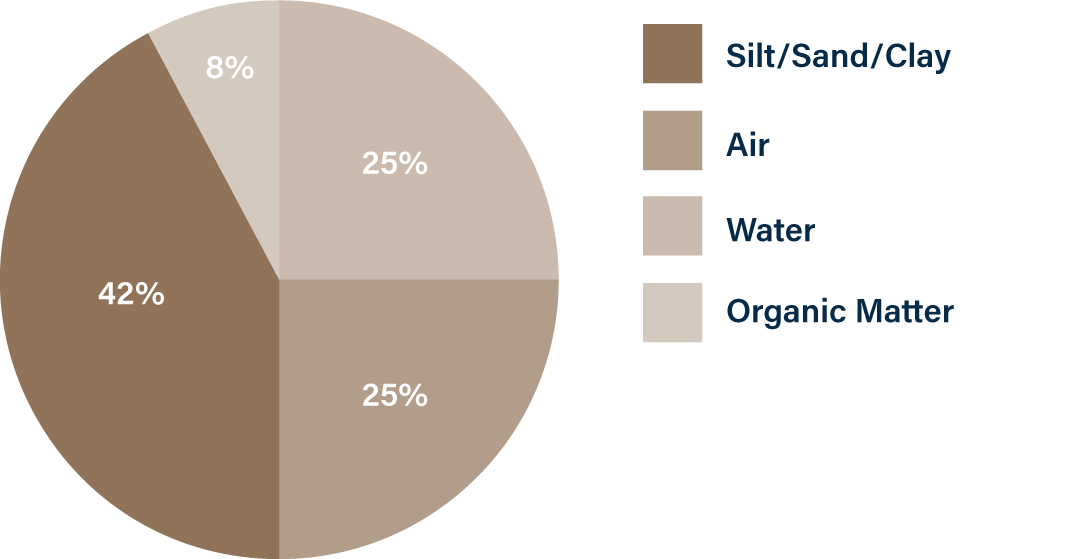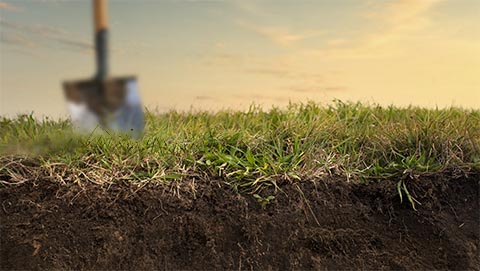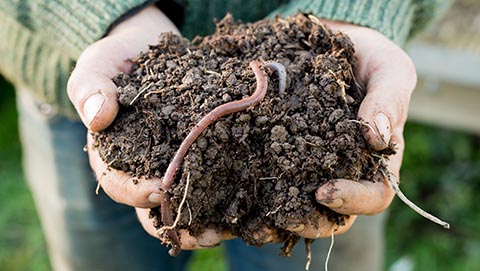Understanding the physical structure of your soil
The physical structure of the soil impacts on a range of functions such as plant growth and other environmental impact factors like water runoff, erosion and leaching.
For soil to have a clean bill of health, we need to be mindful of its three main elements. These elements are interrelated, so if one is out of balance it can adversely affect the other two.

Why does soil structure matter?
Your soil structure determines the pore space, which in turn influences root growth and air and water movement. Soil particles (sand, silt, clay etc) and organic matter arrange over time into small clumps (aggregates) which give the soil structure. Knowing soil properties such as texture, drainage class and structural makeup helps you manage and maintain its health.
Soil physical health and the shape of soil aggregates depends on:
- Wetting/drying cycles
- Freezing/thawing cycles
- Soil texture
- Animal treading pressure
- Farming/cultivation practices
The degree of soil structure can be described as:
- Structureless - no soil aggregates formed i.e. single grained like beach sand
- Weakly developed structure - when soil aggregates are poorly formed
- Moderately developed structure - many formed aggregates
- Strong developed structure - where soil aggregates are very well formed
- Soil aggregates come in a variety of different shapes described as a single grain, platey, granular, blocky etc describing their make up
What is the structure of healthy soil?
When soil has a healthy structure, it works to:
- retain water after rain, ensuring a continuous supply of water and nutrients to plants
- stop nutrients moving below the root zone and into ground water
- help minimise erosion
Aerated structure is crucial to your soil's physical health. Healthy soil consists of:
- 25% air
- 25% water
- 8-15% living and dead organic matter
- 35-42% is a mix of silt, clay and sand in varying proportions.
The mix gives the soil its texture and structure.

What about colour?

How can we maintain the physical health of our soil?
If we over-work our soils through cultivation and organic matter levels decline, our soil productivity as a consequence will decline. To maintain healthy soil, it's important to:
- Keep it covered with vegetation
- Use less intensive or less frequent cultivation
- Maintain a moderate to high soil fertility. The more vegetation grown, the more food there is for soil microbes.

Healthy levels of macronutrients ensure that plants develop strong, deep roots, and soil organisms increase

Healthy soil is teeming with life. One teaspoon contains 3-5 billion organisms that bring important value to the soil

Ballance Nutrient Science Manager Dr Sheree Balvert explains the advantages of healthy soil